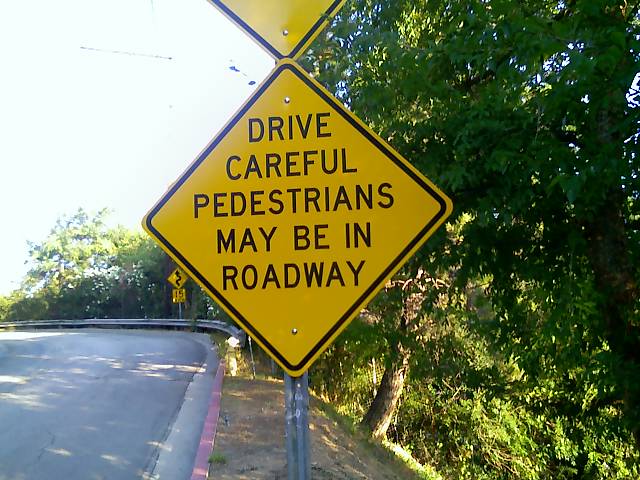The Great Southern California ShakeOut
September 26th, 2008 at 9:25 pm (Geology, Society)
I attended an excellent lecture this evening by Dr. Lucy Jones of the USGS titled, “The Science Behind the ShakeOut.” The Great Southern California ShakeOut is an exercise that will involve millions of southern California residents and responders in simulating a magnitude 7.8 earthquake at 10:00 a.m. on November 13, 2008. The scenario is pretty dramatic, but was deliberately chosen not to be the worst-case scenario; the goal is for the exercise to feel realistic enough to send a “this could really happen” message. Participants are encouraged to plan out how to get messages to friends and relatives in the aftermath of the quake (tip: text messages are more likely to get through than live phone calls), how to survive (stock up on water!), and to do a thorough check of what could fall/ignite/explode in the house.
The simulation videos are pretty fascinating (and disturbing). The earthquake originates south of L.A. but quickly propagates northward up the San Andreas, then gets “stuck” in the L.A. basin as the thickly piled sediment floor rattles around like jello for an estimated 55 seconds. (The 1994 Northridge earthquake lasted a grand total of 7 seconds.) Likely damages include:
- Power lines crossing the San Andreas will be severed. This will trigger a cascade of failures that will take out the entire West Coast power grid. Interestingly, we will probably lose power 20-30 seconds before the quake reaches L.A.—a kind of “early warning” system.
- Water crossing the fault will be disrupted. This is the most severe threat to post-quake survival, since the water distribution system is mostly concrete, quite old, and has little likelihood of being retrofitted to be more robust, and because humans don’t live very long without water. And we live in a desert…
- On the other hand, our lack of water means that the chance of soil liquefaction (scary thought) is low.
- Landslides will be rampant, causing damage and blocking roads.
- Natural gas and gasoline pipelines crossing the fault will be severed. So will fiber optics and telecom lines. Just about all of our incoming lines and pipes of this sort cross the San Andreas somewhere and are therefore vulnerable.
- Roads and rail lines crossing the fault will be broken. Fortunately, heavy investment in bridge retrofitting since the 1989 Loma Prieta earthquake has reduced the chance of bridge failure in the major highways.
- 1 in 16 buildings will be “significantly damaged” (defined as incurring damage that would cost more than 10% of the replacement value to correct).
- 133,000 houses will be burnt due to post-quake fires.
- $213 billion in damages is expected.
- There will be 53,000 injuries and 1,800 deaths. The latter apparently is quite a small number for a quake of this magnitude, due to increased building safety codes and other existing preparations.
- Yes, this really isn’t the worst-case scenario. It assumes no Santa Ana winds (that would spread fires much further) and that the quake doesn’t propagate much further north than the San Fernando Valley. It also does not account for any damages that would occur due to the (probably large and several) aftershocks.
After the quake, we are likely to experience “rolling light-ups”, in contrast to rolling black-outs; each block will get a couple of hours of electricity per day, at rotating times, as the electricity comes back up to speed.
Overall, the talk was full of fascinating detail, and it’s clear that they’ve invested a lot of effort in defining the simulation scenario details. Many of the estimated numbers are the result of multiple independent teams making estimates and then pooling them together, to increase the reliability of the estimates. The likely outcome is sobering, and this isn’t a low-probability event; large quakes happen on the San Andreas about every 100-150 years. The last large one at the south end (where this scenario originates) was in 1685.
I signed up for the ShakeOut a few months ago, out of curiosity. Now I’m even more motivated to get around to preparing an actual earthquake kit and stocking up on water—and planning how I would get word out to friends and family to assure them of my survival.


